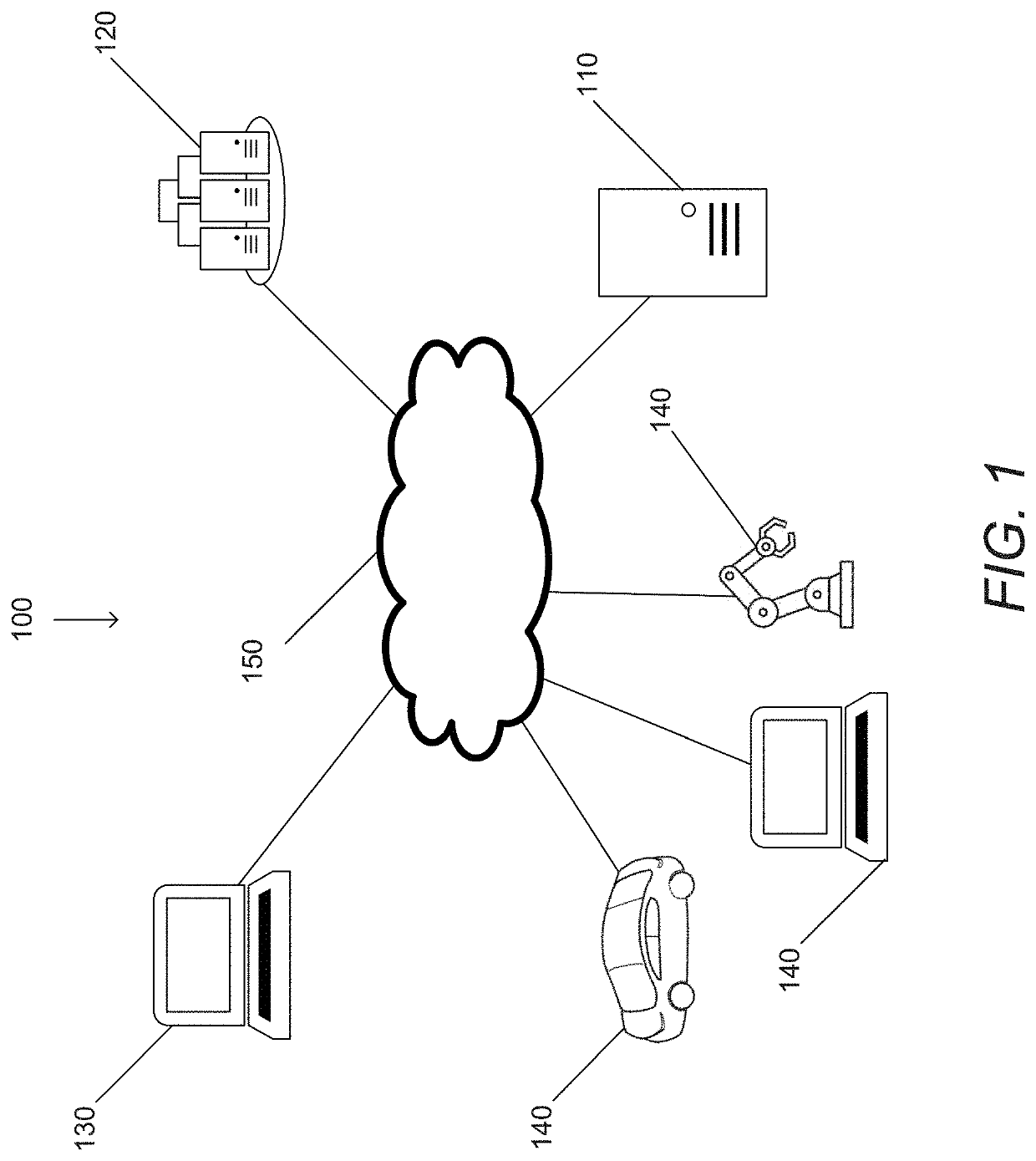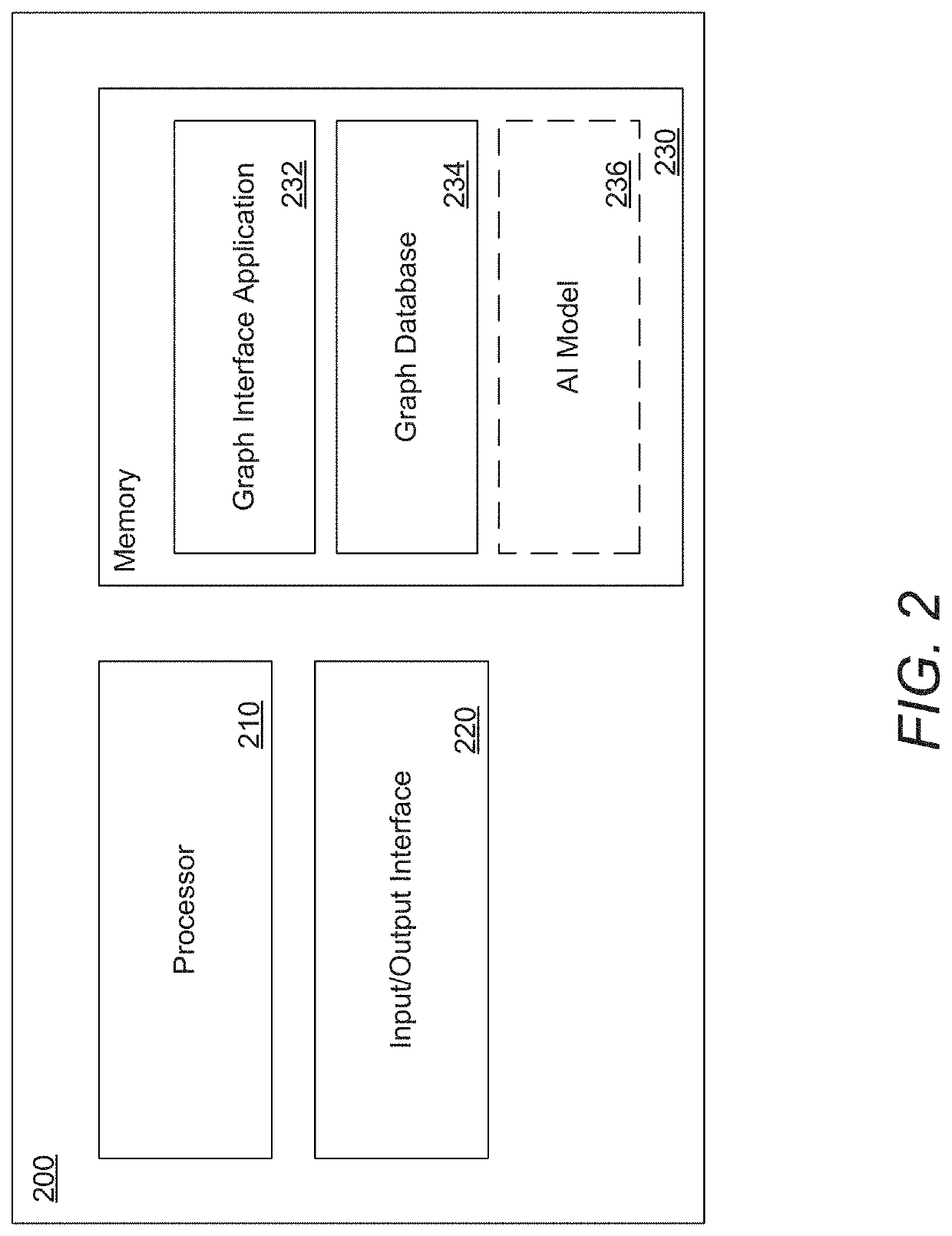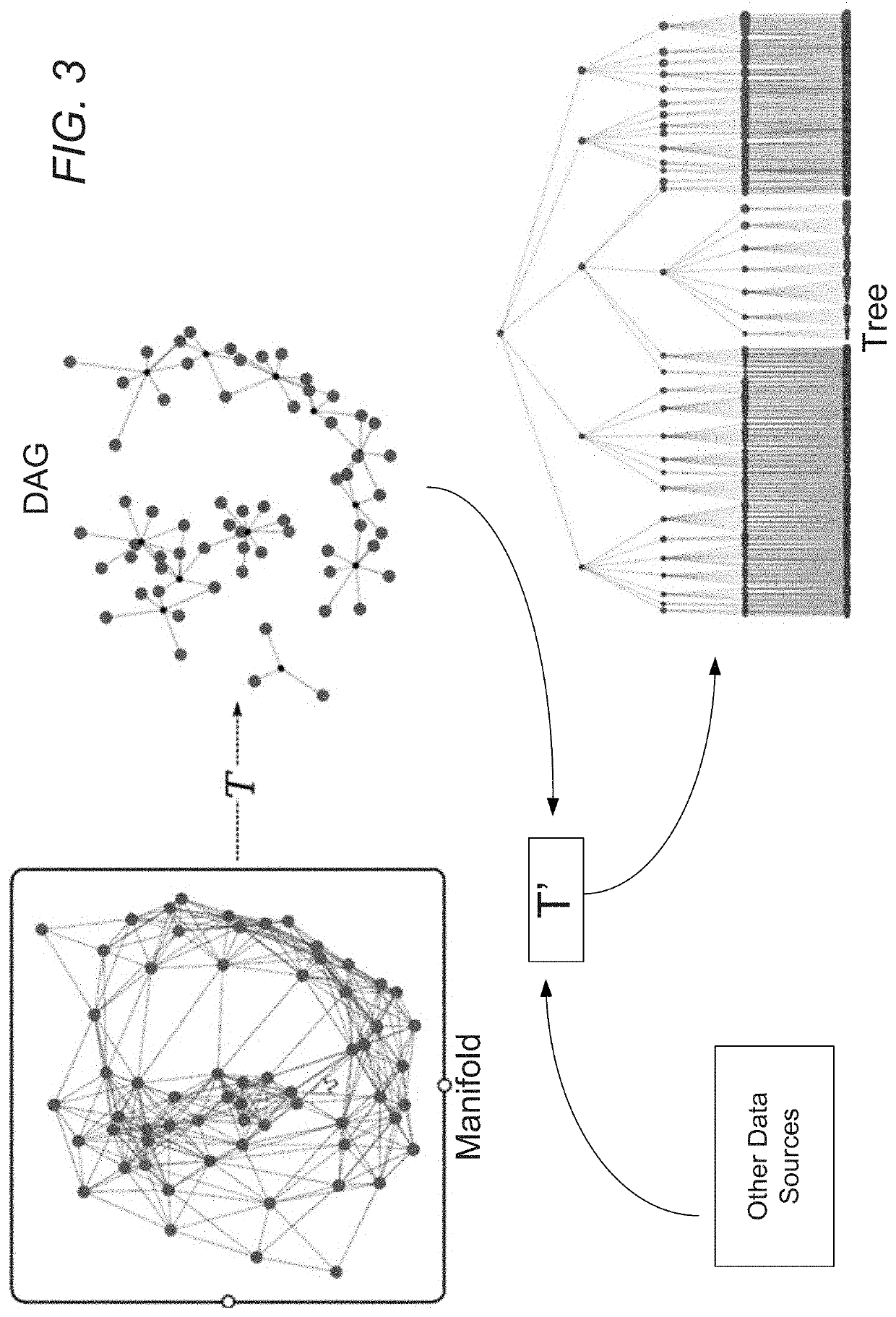Systems and Methods for Graph-Based AI Training
a graph-based ai and training technology, applied in the field of graph-based ai training systems, can solve the problems of affecting the nature of training data itself, and preventing so as to achieve the effect of hammering the progress of ml and ai systems
- Summary
- Abstract
- Description
- Claims
- Application Information
AI Technical Summary
Benefits of technology
Problems solved by technology
Method used
Image
Examples
Embodiment Construction
[0078]Turning now to the drawings, systems and methods for graph-based risk analysis are described. Graphs, in the sense of sets of connected nodes and edges, are powerful tools that can be used to encode any arbitrary data. In numerous embodiments, the data underlying a graph is stored in a data structure called a “graph database.” Graph database manipulation systems can be used to create and interface with graph databases through any of a variety of different means, including, but not limited to, text based methods or visual interfacing methods. However, the capabilities of graph database manipulation systems and / or any other graph-based systems can be augmented beyond conventional graph operations. Systems and methods described herein provide augmentations to graph databases which provide functionality for using graphs in concert with AI and ML systems that increase usability of big data sets from both a human perspective and a machine perspective.
[0079]Broadly, ML systems are sy...
PUM
 Login to View More
Login to View More Abstract
Description
Claims
Application Information
 Login to View More
Login to View More - R&D
- Intellectual Property
- Life Sciences
- Materials
- Tech Scout
- Unparalleled Data Quality
- Higher Quality Content
- 60% Fewer Hallucinations
Browse by: Latest US Patents, China's latest patents, Technical Efficacy Thesaurus, Application Domain, Technology Topic, Popular Technical Reports.
© 2025 PatSnap. All rights reserved.Legal|Privacy policy|Modern Slavery Act Transparency Statement|Sitemap|About US| Contact US: help@patsnap.com



